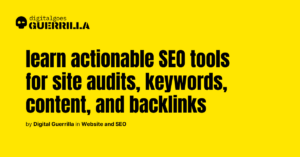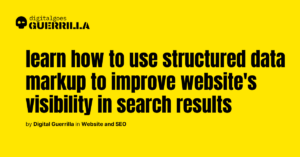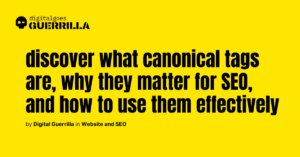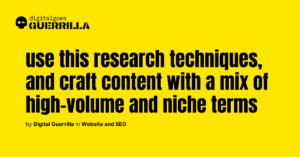In the digital age, having a website isn’t enough—your site needs to perform well in search engine rankings to attract visitors. But despite the wealth of SEO advice available, many website owners struggle with effectively optimizing their content and structure. How do you ensure your website isn’t just beautiful but also search-engine friendly? This guide dives into advanced yet actionable strategies to help you master the art of website optimization for SEO.
Why Website Content and Structure Matter for SEO
Search engines like Google prioritize user experience. This means your website’s content and structure must work together seamlessly to offer valuable information and intuitive navigation. Poorly optimized content or a confusing structure can lead to high bounce rates, slow load times, and reduced search engine visibility.
Think of your website as a book. The content represents the knowledge inside, while the structure—headers, chapters, and index—makes it easier for readers (and search engines) to find and absorb that knowledge. By aligning these two aspects, you create a site that’s easy for both users and search engines to understand and rank.
Optimize Content for Search Intent and Keywords
Beyond Keywords: Understanding Search Intent
While keywords are foundational, optimizing for search intent—the “why” behind a user’s search—is what separates great websites from mediocre ones. Is the searcher looking for quick facts, in-depth analysis, or how-to guidance? Align your content to match this intent.
For example, if the keyword is “How to optimize website content for SEO,” users may expect a detailed, step-by-step guide rather than a general overview. Tools like Google’s “People Also Ask” section or AnswerThePublic can provide insights into intent-driven topics to cover.
Long-Tail Keywords: The Secret to Targeting Niche Audiences
Long-tail keywords are phrases that are more specific and less competitive, making them easier to rank for. For instance, instead of targeting the broad term “SEO optimization,” focus on “how to optimize website content structure for local SEO.” These keywords often indicate a user’s readiness to take action, driving higher conversion rates.
Use tools like Ahrefs or SEMrush to identify long-tail keywords relevant to your niche and integrate them naturally into your headers, body text, and meta descriptions.
Create a Logical, Intuitive Website Structure
Start with a Solid Information Architecture
A well-organized website structure ensures both users and search engines can navigate your site with ease. Begin by mapping out a logical hierarchy:
- Homepage: The entry point to your site, linking to all major sections.
- Categories: Broad topics that group related content (e.g., Services, Blog, Products).
- Subcategories: More specific groupings under each category.
- Individual Pages: The most detailed level of information.
This structure should be reflected in your site’s URL (e.g., www.example.com/blog/seo-tips). Such clarity helps search engines understand relationships between pages and enhances link equity.
Internal Linking: Build Context and Authority
Internal linking is a powerful but underutilized SEO strategy. It connects related pages, improving navigation and signaling to search engines which pages are most important. For example, in an article about “how to optimize website content for SEO,” link to a related post like “Top Tools for On-Page SEO.”
Pro tip: Use descriptive anchor text that includes relevant keywords, rather than generic phrases like “click here.”
Advanced Tips for Content Optimization
Incorporate Semantic SEO
Semantic SEO goes beyond traditional keywords by optimizing for the broader meaning behind a query. Google’s algorithms use Natural Language Processing (NLP) to understand context and relationships between words.
To apply this, use:
- LSI Keywords: Related terms and phrases (e.g., “on-page optimization” alongside “SEO content strategies”).
- Contextual Clues: Answer “what,” “why,” and “how” questions to address user intent comprehensively.
Write for Skimmers and Deep Readers
Online readers often skim content. To cater to them, include subheadings, bullet points, and concise paragraphs. At the same time, provide detailed information for users who want to dig deeper. Content like case studies or step-by-step tutorials caters to this dual audience.
For example, a section on optimizing website structure might include a quick checklist for skimmers and an in-depth explanation for advanced users.
Technical SEO: The Backbone of Optimization
Improve Page Load Speed
A slow-loading website frustrates users and hurts rankings. Use tools like Google PageSpeed Insights or GTmetrix to identify and fix issues such as large image files, unminified code, or excessive server response times.
Mobile Optimization is Non-Negotiable
Over 60% of web traffic now comes from mobile devices. Ensure your site uses responsive design, where content adjusts to fit different screen sizes. Test your mobile-friendliness with Google’s Mobile-Friendly Test tool.
Schema Markup: Enhance Your SERP Presence
Schema markup adds context to your content, helping search engines understand it better. For instance, using schema for “How-To” articles can lead to rich snippets, making your content stand out in search results.
A Quick Checklist for SEO Success
- Keyword Research: Focus on long-tail keywords.
- Content Alignment: Match content with search intent.
- User Experience: Ensure clear navigation and fast load times.
- Internal Links: Strengthen page relationships.
- Semantic SEO: Optimize for context and meaning.
- Mobile Optimization: Ensure responsiveness.
- Schema Markup: Implement rich snippets.
FAQs: Common Questions About SEO Content and Structure
What is the ideal length for SEO-optimized content?
While there’s no magic number, articles between 1,500–2,500 words tend to perform well. However, prioritize quality over quantity.
How often should I update my content for SEO?
Regular updates keep your content relevant. Aim to revisit and refresh key pages every 6–12 months.
Does URL structure impact SEO?
Yes! Simple, keyword-rich URLs (e.g., www.example.com/seo-tips) improve usability and rankings.
Conclusion: Build a Foundation for Long-Term SEO Success
Optimizing your website’s content and structure is not a one-time task but an ongoing effort. By aligning your content with search intent, structuring your site logically, and staying updated on the latest SEO trends, you’ll set your website up for long-term success.
Read more about Website and SEO 🔽
- How to organize SEO workflow and what tools to use?

- How to plan categories and tags on wordpress based blog?

- Why Structured Data Markup (Schema.org) Matters for Your Website?

- What Are Canonical Tags? Why Do They Matter for Your SEO?

- What is Keyword Difficulty?

- How to balance keywords search volume and relevance to your content?
